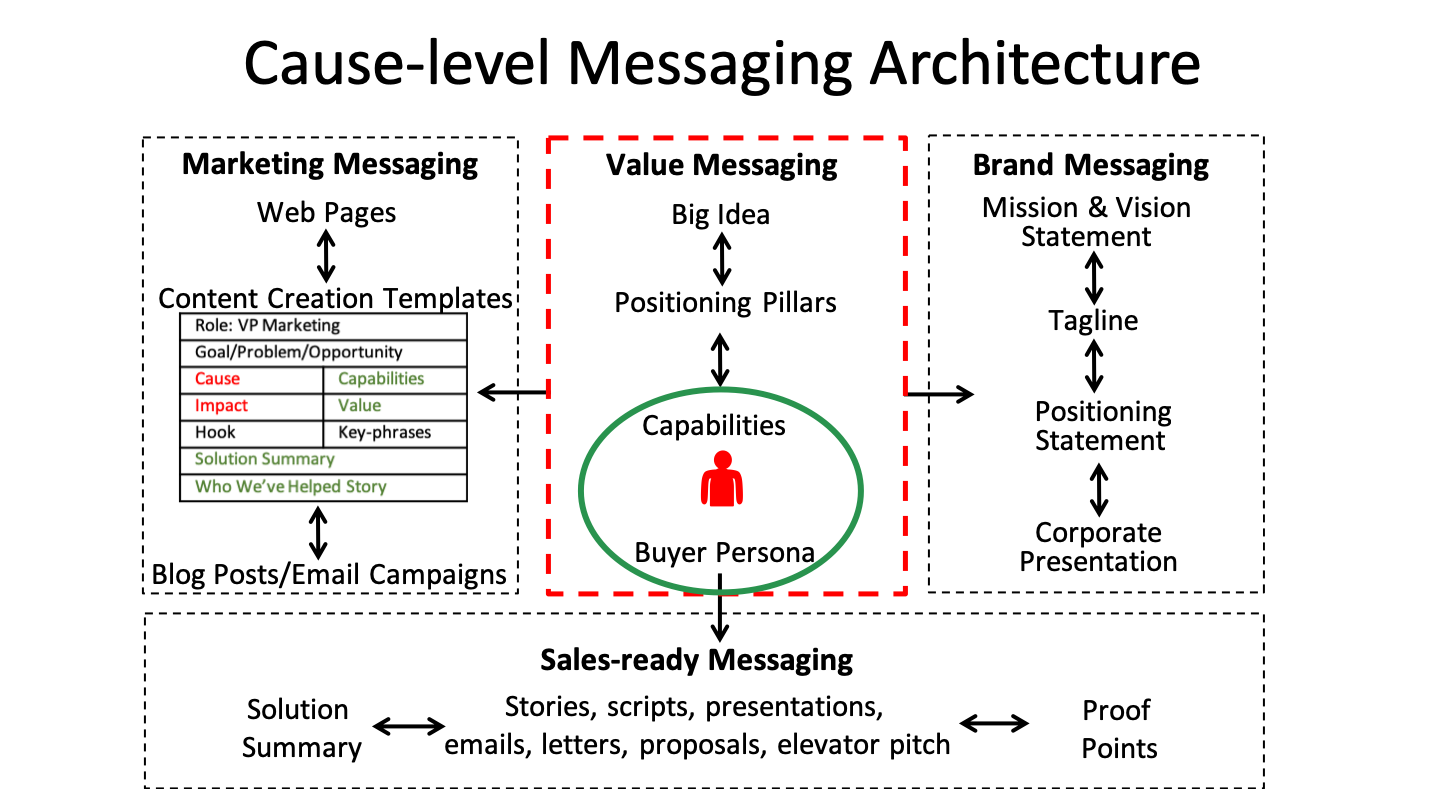Positioning Statements
Use a Positioning Statement in Every New Sales Encounter
The positioning statement is extremely powerful in getting initial engagement when opening a sales call in person or on the phone and should be used to open presentations as well as it produces very high engagement rates. The Positioning Statement is a combination of two statements presented as questions to succinctly engage the buyer in conversation around their likely issues.If we have a clear value proposition which is created during a Sales and Marketing Alignment project, the positioning statements will be obvious and easy to apply.

Real World Example
I'm a sales and marketing consultant and I work on solving two huge problems problems that intersect sales and marketing;1. Inbound lead generation - and I resell and implement HubSpot for Inbound Marketing and,
2. Responsive buyer engagement, and I implement and resell WittyParrot which effectively aligns sales and marketing messaging and enables salespeople to engage prospects in real time. The following example is verbatim for my business, but you can easily adapt it for yours.
A Typical Opening to a Cold Call
Buyer: Ring Ring....Buyer thinking: Oh-oh another interruption, I've got no time, but I will answer as it could be important.Buyer: Hello this is Jim Buyer.
SP: Hi Jim, this is Rick Salesman from XYZ Company, I'm calling because I thought you might be interested in hearing about how we could help you save a lot of money on your ........; I'll be in your area next week and I would like.... click!, or alternatively, Buyer: Thanks Rick, but we've already got what XYZ makes....goodbye.
Have a listen to the next inbound cold call you get and I'll bet it goes something like that.
Now let's examine a better way of making that call.
Step 1. Ring Ring...Buyer: Hi, Jim Buyer
SP: "Hi Jim - it's Rick Salesperson"...........wait for the buyer to respond.
Buyer: Hi Rick......do I know you?
SP: "Oh Oh, sounds like you are in the middle of something /or name doesn't ring a bell?"
What just happened here? The salesperson introduced him/herself and then waited until the buyer gave permission to speak. This pause in itself is a powerful technique and sets up the next part of the call perfectly.
If you are cold calling, the buyer will not know you, if you are following up an inbound lead, the odds that the buyer will know your name are remote, but give them time to think, so instead of jumping down the buyers throat, we make a judgment call and use either of the opening statements...(Oh Oh, sounds like you are in the middle of something /or name doesn't ring a bell).
We then segue to the first positioning statement.
SP: Jim, is it OK if I take a moment to explain why I'm calling?
Buyer: Sure....
(You have waited for permission to speak and now asked for permission to ask a question...this already sets you apart)
SP: I help marketing leaders who are frustrated with the inability of the sales team to differentiate their products in a crowded market.
(If you have done your job well and targeted the buyer effectively with the first positioning statement, you may get an engaging signal like .....yes that's always been a problem....now its time to use the second part of the positioning statement.)
SP: "Jim, do you mind if I ask you a question?"
Buyer: "Sure"
SP: "I talk to a lot of marketing leaders and lately I'm hearing the two biggest problems are weak sales pipeline and an inability to differentiate from competitors... do either of these sound familiar?
Create a Martix of Role-based Positioning Statements
I have a matrix of product and role-based positioning statements I use to call the various stakeholders that register as inbound leads from my Website for both products.
Because I have been polite and asked permission at each step of the call, if the positioning statements are slightly off target, I find that most of the time, the buyer will volunteer their biggest problem and then you have dialog 100% focused on what the buyer cares about most - their issues.

